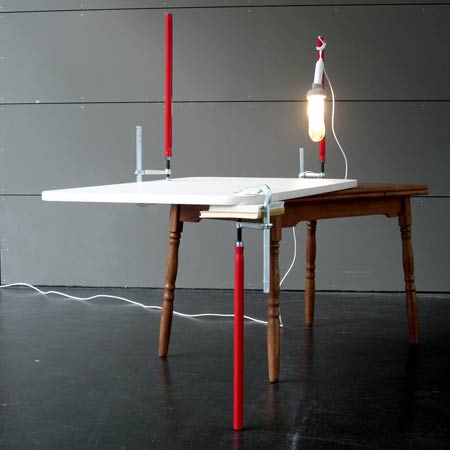
Ad Hoc by Peter Schäfer
Ad Hoc is a furniture series designed by German design student Peter Schäfer.
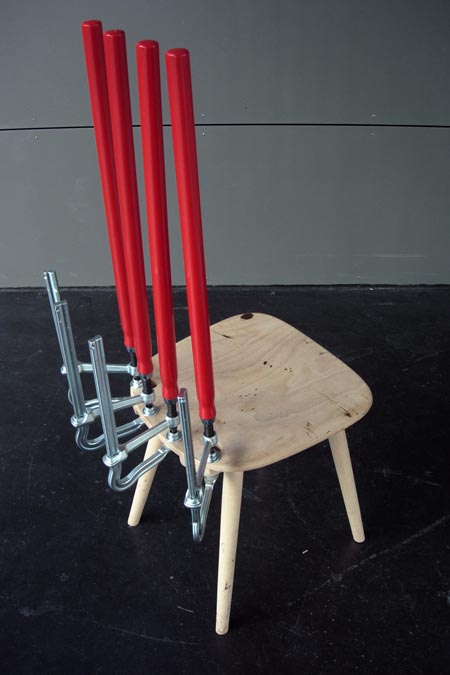
The project explores the creation of expandable or modular furniture by "adulterating" existing objects using woodworkers' cramps.
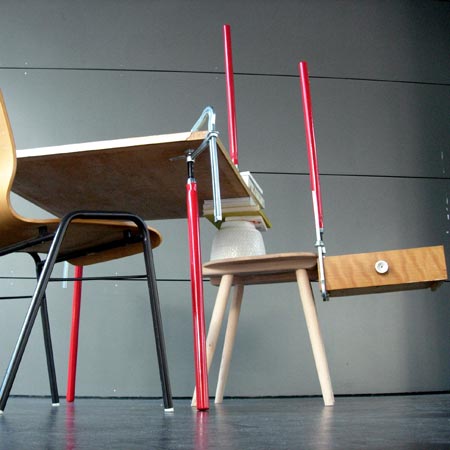
The following is from Peter Schäfer:
--
Find yourself ways not being controlled by furniture but find out what things are and how to use them the way you want them to be used.
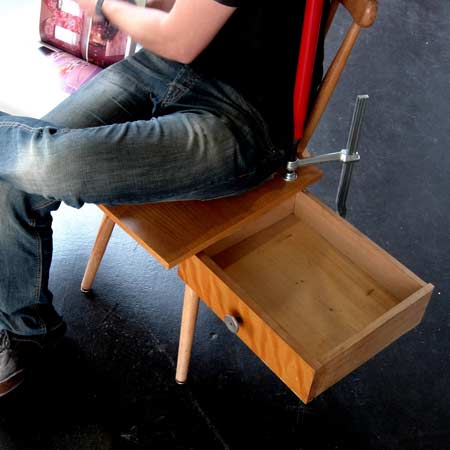
Discription:
The furniture we share our lives with is due to it's function mostly subject to our conventional view, being chair, table, cupboard or shelf. Ad Hoc is the spontanious use of a tool, that extends existing objects, thus becoming part of a new, temporary concreteness.
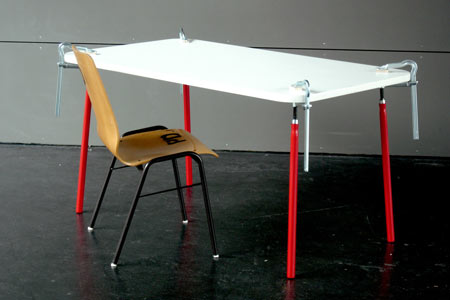
Concept:
"Living areas are becoming smaller."," Resources are becoming scarcer."," The desire for flexibility is growing." These three statements describe the demands which should be fulfilled today when designing up-to-date products. They are obviously statements which characterise a useful design.
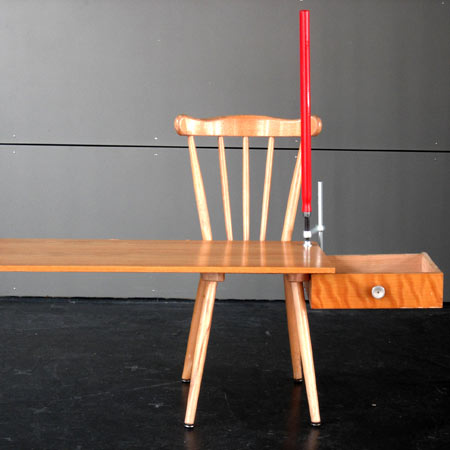
Surely the design of the products has the duty to use practical solutions to adapt to the given conditions. Or can the design not rather attempt to make us make more use of our living conditions without immediately creating space-saving, ecological, multifunctional products for every area of life.
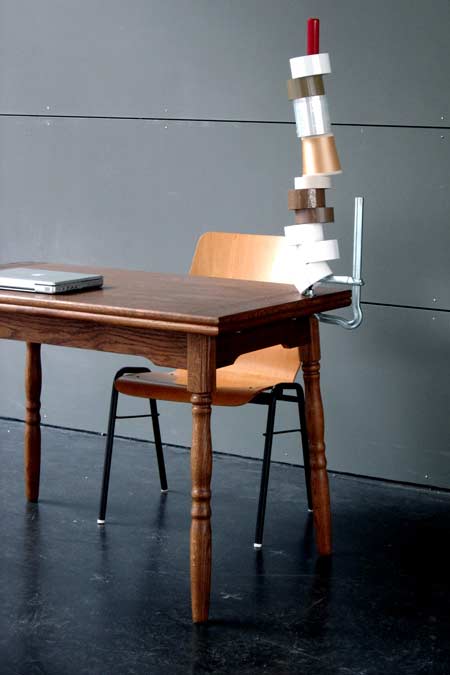
When we look around in our home we see a shelf, a chair, a bed, a lamp and a table - objects which we have used to furnish our home. Fitting shelf-cupboard combinations, with space for everything, seem to be available for every room. These objects are the basic principles of design, or seen differently they are too often the result of a complicated planning process. An example of this is the lamp.Everything is apparently possible with such an object. Consisting of plug, cable, socket, light bulb and lamp shade, it is most commonly the lamp shade combined in daring ways with the light bulb, which is modified to always produce the same result. The light in a room.
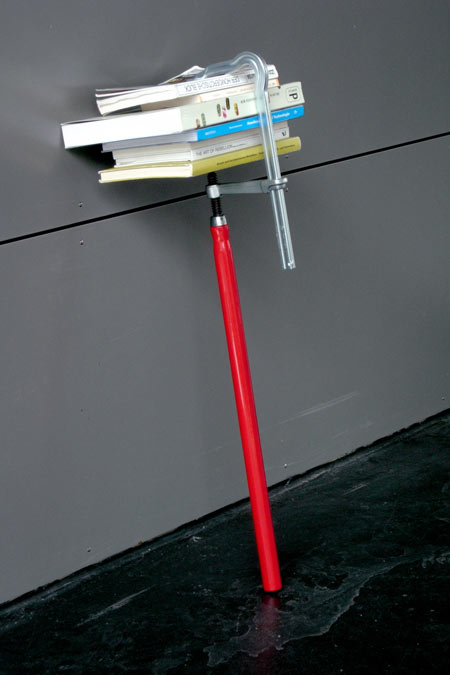
A new piece of furniture could have a completely different design if it is to be used for a different purpose. For example a book shelf which doesn´t hold books so that they are always immediately at hand. Rather the books which have already been read, and are then seldom removed from the shelf, should be seen in combination with the shelf as the objects of decoration.

Chairs, contrary to their character, are more often unoccupied than occupied. However we are accustomed to having a chair standing in a room, waiting for us. Generally we have made our surroundings useful to such an extent that a new design can only produce variations on concepts which have already been handed down from design to design.
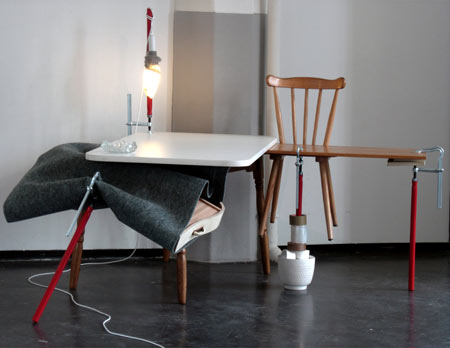
Based on the idea of a furniture leg, that is mobile and allows the combination with different types of table tops, the clamp can be seen as a tool which is part of the design both in function and appearance.
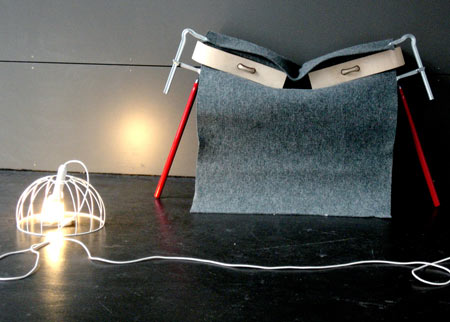
The simple function was the determining factor in the modification of the tool. It should be easy to understand and should inspire the user. A defined purpose, as for example with a hook as a handle, should be avoided. If you held a clamp in your hand you would inevitably start to look for things to clamp together or to which you could screw the clamp. New objects will be created that are set together out of old objects or which extend or alienate existing objects.
Traditionally the grips of tools are accentuated with the colour red and this together with the extended length of the grip gives the impression that the tools could be utilised for many purposes. With the use of the tool we question our attitude to many things. We are forced into developing flexibility in our thinking and in our approach to objects.
With " ad hoc" I am searching for a new family of furniture. Objects which function for an instant and because or their improvised character are not designed for long-term use as furniture. They adulterate existing objects and deprive them of their normally associated purposes.